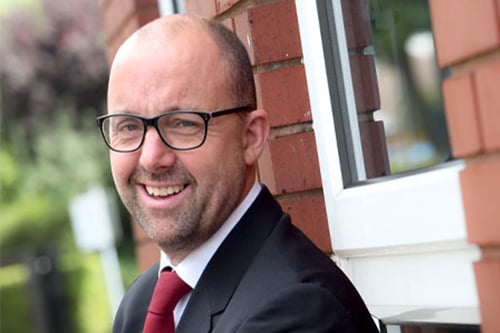

The question of what comes first – technological innovation or the demand for such innovation is the modern-day equivalent of the chicken and the egg. According to the Group CEO of Open GI, Simon Badley (pictured above) the answer can only be “a little bit of both”. Badley who first joined the business in July of last year has always been drawn to roles where he can make a tangible difference to the performance of the business, and his responsibilities at Open GI present the perfect opportunity to do just that.
“It’s quite difficult to change a business that has existed for as long as Open GI has, especially when it has performed so relatively strongly by doing a certain set of things,” he said. “So why do businesses need to change? The main drivers will be consumer-driven. But why will consumer requirements change? They will change because of regulation, because of changes in their own behaviour and because they see the power of technology to automate and to improve the efficiency of their businesses.”
The focus for Badley is on forming true partnerships across the insurance ecosystem and creating relationships where Open GI can be relied on as an expert capable of understanding the problems faced by clients. Badley noted that the ‘Core’ business of Open GI has been its centre of operations for about 30 years and has enabled the business to establish a strong position in the GI value chain. This will remain a positive part of the business for a long time due to the number of users who still utilise its services and feel that it supports their businesses well.
However, now the focus is on finding the next generation of ‘software as a service’ solutions – such as through the business’s acquisition of Transactor Global Solutions. This vision of a future which demands more modern and flexibly architectured solutions was also the reason behind the development of its Mobius proposition. This seeks to provide solutions across a full spectrum of general insurance entities, encompassing their unique range of needs.
Badley’s goal is to make Open GI the standout partner in the general insurance market and the first port of call for people in the industry looking for support as they seek to improve their businesses using technology. Though he is aware of the somewhat herculean nature of this task, he is confident that this can be achieved by looking beyond the current paradigm and thinking about how insurance consumption is going to change over the next decade.
Now, he wants to make this strategic direction clear both to the staff of the business and its customers. Looking internally, Badley noted that most employees have been with the business for a long time and are essential to its strength, but they must be willing and able to follow this shift in direction. At every level of the business, staff must be able to think and act differently and to look at problem-solving as something that needs the perspective of both your head and your heart.
Communicating the brand to customers is not simply about logos and colours, Badley said, but also about examining how the brand is positioned and how the business operates. Making the new value proposition of the business clear is a major challenge for the organisation, but one it is embracing as necessary to ensure that the journey started reaches a successful conclusion.
“There’s a lot of things about Open GI that customers that have been with us like, and we enjoy strong loyalty. But they absolutely want us to be different and the question is, how we can convince them [that this is happening]?” Badley said. “The only thing that can really do that is delivery. The only thing that matters is the physical manifestation of this vision, this strategy and the delivery of software that works.
“First and foremost, we must prove ourselves to be really good at those hygiene factors –those things that are most important to our customers. And from that base, we can show our ability to innovate. That’s the journey I’ve got in my head. And we haven’t landed that yet, but I think we are in the right area, and we are already starting to see positive feedback that suggests that people can see that things are changing.”
